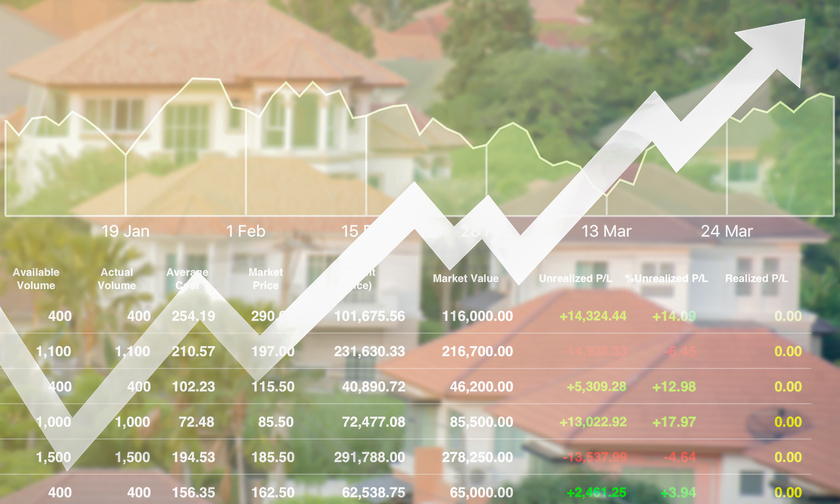How the CPI and the Fed’s Fight on Inflation affect the U.S. Housing Market

(Disclaimer: The content of this article is not intended as financial or investment advice but rather information for educational purposes only.)
Recently, the Consumer Price Index (CPI) has displayed fascinating trends crucial for understanding the real estate investment landscape, and savvy investors must understand how it shapes their potential opportunites.
Understanding the CPI and its Components
The CPI, a critical economic indicator, measures the average change over time in prices paid by urban consumers for a variety of goods and services. This data is especially interesting when tracking thinks like the cost of food and energy, both of which significantly impact the overall cost of living.
For real estate investors, the “shelter” category is particularly crucial. It accounts for rents, lodging away from home, and owners’ equivalent rent of residences. When investors begin to understand this part of the data, they can better predict market shifts and make more informed decisions.
November CPI Analysis: A Detailed Examination
One of the most essential insights from November’s 2023 CPI data is the significant increase in housing costs compared to November 2022, with rent rising from 6.87% and the owners’ equivalent of rent increasing by 6.68% These figures are critical indicators of the shifting landscape in the housing market, signaling potential opportunities and challenges for investors.
While housing costs increased, the overall CPI this month came in slightly lower than last month’s, down from 3.2% to 3.1%. Additionally, while the overall food index rose by 0.2% in November, it showed a slight decrease from October’s 0.3% increase.
These fluctuations in food and energy costs, alongside housing expenses, play a significant role in shaping the economic environment for real estate investments.
The Role of Shelter in CPI
Shelter costs, accounting for about a third of the CPI, are directly linked to the real estate market. These costs have shown a monthly increase of 0.4% and an annual rise of 6.5%. Although there has been a gradual decline in the annual rate since early 2023, these numbers have substantial implications for real estate investors. Understanding how shelter costs correlate with broader economic trends is crucial for strategic investment decision-making.
Federal Reserve’s Interest Rate Policy and Its Implications
The Federal Reserve’s interest rate policy, crucial in shaping the economic landscape, has seen 11 rate hikes since March 2022 in an effort to combat inflation.
Many real estate experts are anticipating a potential shift in this policy starting 2024, with a move towards lowering rates. This possible change could herald a new era for the housing market, influencing affordability, buyer sentiment, and investment strategies.
Impact on the U.S. Housing Market
The relationship between CPI trends, Federal Reserve policies, and the housing market creates a dynamic environment for investors.
Changes in CPI reflect shifts in consumer spending power, while Fed policies affect interest rates, thereby impacting the housing market. Lower interest rates typically increase housing affordability, leading to heightened demand. For investors using Equity Trust Self-Directed IRAs (SDIRAs), these market dynamics offer unique opportunities to expand and diversify their portfolios.
Opportunities for Equity Trust SDIRA Investors
In the current economic climate, investors with Equity Trust SDIRAs are ideally positioned to benefit from emerging trends. With potential shifts toward lower interest rates and evolving housing market dynamics, astute investors can find lucrative opportunities.
Key strategies involve focusing on markets with strong growth potential, leveraging compound interest in a tax-advantaged IRA, and diversifying investments to mitigate risk. Understanding the interplay between CPI, interest rates, and housing market trends can provide a competitive edge in identifying promising investment opportunities.
Preparing for the Future: Tips and Strategies
As the economic landscape evolves, it’s crucial for real estate investors to stay informed and adaptable. Keeping up-to-date with changes in CPI, Federal Reserve policies, and housing market trends is vital. Additionally, building a diverse portfolio that includes various property types and locations can help mitigate risks.
Regular consultations with financial advisors and active participation in investor communities can also provide valuable perspectives and strategies for optimizing Equity Trust SDIRA.
Conclusion
The intricate relationship between the CPI, the Federal Reserve’s monetary policies, and the U.S. housing market presents both challenges and opportunities for real estate investors, particularly those using Equity Trust SDIRAs.
By comprehending these dynamics and maintaining a proactive approach, investors can position themselves to capitalize on market shifts and achieve their investment goals.
